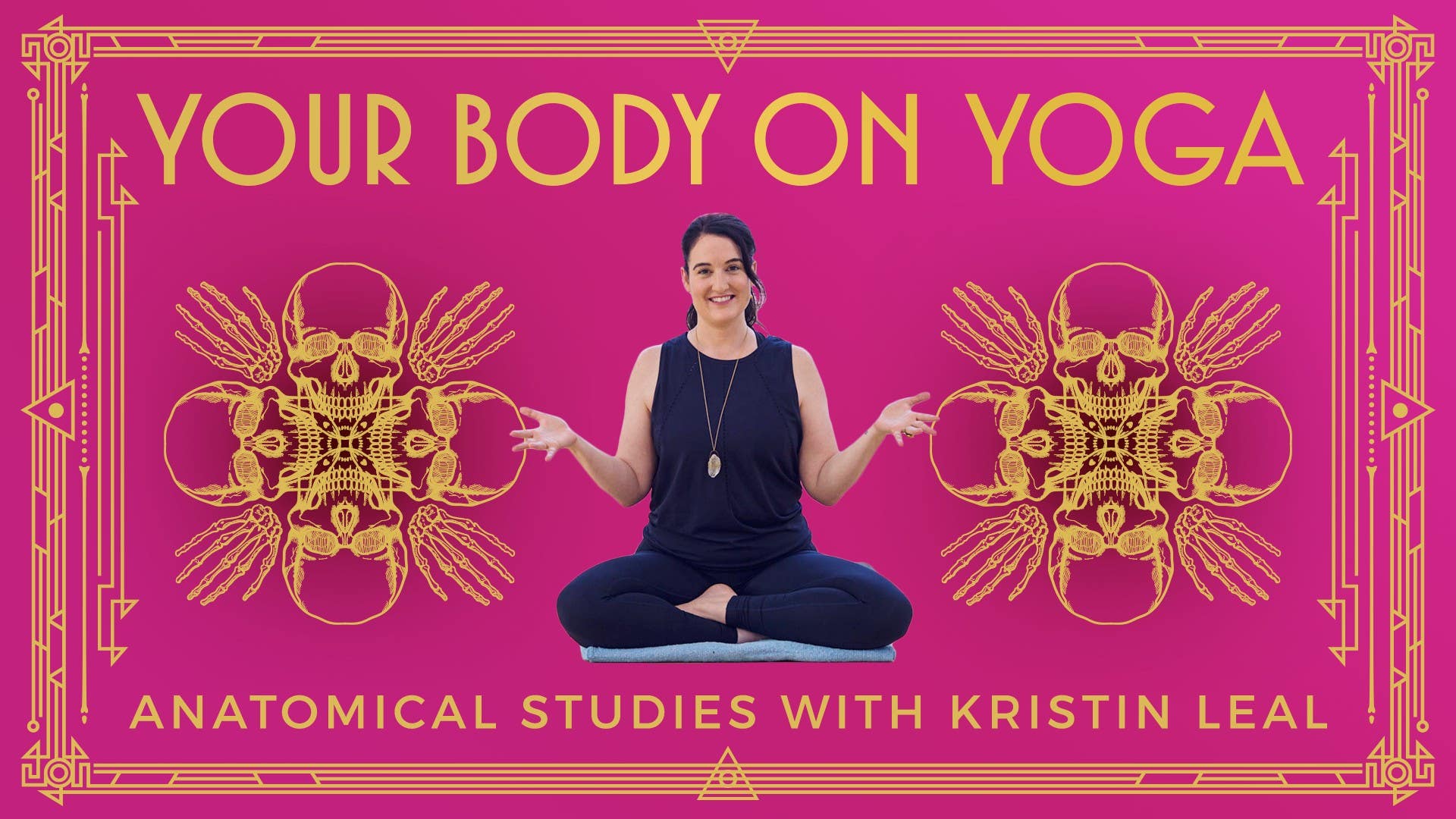Description
See attached .pdf below of Anatomical Positions and Terms.
About This Video
Transcript
Read Full Transcript
I'd like to introduce you to your inner architecture, your skeleton. And we have Eduardo with us today to help us demonstrate. And we are made up of all of these various bits and bobs, 206 or so bones. And I say that with kind of a question mark because one out of 20 of us have an extra rib. 10% of the population will have a different amount of lumbar vertebra, lower back vertebra.
And so this makes a difference in our own practice as we put these parts together and move these parts around in an asana practice. This makes a difference in our students if we are teachers, how these poses are showing up. They are wildly unique. We have to have an agreed upon language as we start before we can start adding some movement in. So just a little terminology.
We have to have a starting point. And our starting point looks a lot like tadasana in yoga language. In anatomical language, it's called anatomical position or anatomical neutral. So this would be feet flat on the floor, looking straight towards the student or towards the observer. And the arms are down by the sides with the palms facing forward.
Now I know in tadasana sometimes there's a stylistic choice depending on who your teacher is or what lineage they come from, whether the palms are facing in or palms are facing forward. I think that's just kind of style, like kind of just the dressing of the pose. In anatomical position though, it's a little bit fussier. We need to put the palms facing forward and we're going to learn as we go why that becomes just a little bit easier for us to view the lower arm bones. Now that we have an agreed upon neutral or starting point, then we can talk about relationships.
The body doesn't move as one independent piece. We are a coordinated system or chain of movement. And so it's all about relating body parts to one another. So we have towards the top of the structure or the top of the individual and that's going to be called superior or closer to the bottom of a structure or the bottom of the individual that's going to be inferior. So our femur bones are inferior to our skull or our skull is superior to our ribs, superior and inferior.
Then we have a front and a back, an anterior and a posterior. The anterior would be closer to the front. The breastbone or sternum is anterior to the heart. Or posterior closer to the backside of the individual or structure. I remember it like, dude, he's got a nice posterior.
So this is kind of the back of the structure. And so the vertebra are posterior to the heart. So we have superior and inferior, anterior and posterior. Now we also have towards the outside or towards the midline, we have lateral and medial. Medial would be closer to the midline of a structure or the person.
Lateral would be away from the midline. Eduardo's arms are lateral to his rib cage. His heart, if he had one, is medial to his lungs. And lastly, we have superficial and deep. Kind of what it sounds like.
Superficial would be closer to the surface, deep, deep to the surface. So we have our skin is superficial to our muscles. Our heart is deep to our rib cage, or as one of my teachers says, our rib temple. So now that we have an agreed upon neutral and we have some anatomical language about the relationship of these body parts, now we can start to add some movement.







You need to be a subscriber to post a comment.
Please Log In or Create an Account to start your free trial.